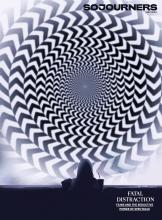interview
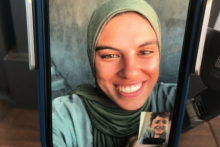
In early 2024, filmmaker Sepideh Farsi felt compelled to document life in Gaza. Ultimately, she couldn’t gain access to the Strip, but she connected with a photographer who’d lived all 25 years of her life there: Fatma Hassona.
The documentary Put Your Soul On Your Hand and Walk is almost entirely composed of their monthslong correspondence. Farsi weaves Hassona’s portraits of an increasingly battered Gaza between a steady exchange of audio messages, spotty video calls, and text messages.
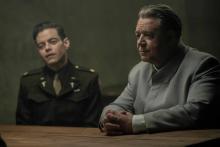
Hermann Göring, Adolf Hitler’s second-in-command, was known as “the best dinner party guest you’ll ever have.” That’s according to James Vanderbilt, the co-writer, co-producer, and director of Nuremberg, the new film dramatizing the origin story of the Nuremberg trials, when, for the first time in history, international law held individuals—not just nations—accountable for crimes against humanity. Göring, played by a precise, brilliant Russell Crowe, was the high command of the Nazi Luftwaffe. He was also, as Vanderbilt told me during a Zoom interview, “funny, charming, and magnetic—none of the things you would associate with a Nazi.”
The film, which premiered at the Toronto International Film Festival in September and arrives in theaters Nov. 7, opens with Göring surrendering himself to the Allied troops in 1945. He directs his driver to wave a white flag...ish (the lace material that he rips from the bottom of his wife’s slip). And just like that, we learn that one of the most powerful Nazi leaders is resourceful, is brazen, is husband.
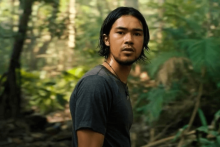
Although Justin Lin is best known now for his work on the Fast & Furious (he’s directed five of the franchise’s 10 entries), he got his breakthrough in independent filmmaking with his 2002 crime drama Better Luck Tomorrow, about Asian-American teenagers in Orange County, Calif. Outside of the Fast franchise, the films Lin has directed and produced often focus on Asian and Asian American identity, exploring topics including generational divides and the pressure to achieve.
Those themes are also present in Lin’s latest film, Last Days, which marks his return to independent filmmaking. Last Days, in theaters now, is a drama about the life of John Allen Chau, the young missionary who was determined to make contact with the Sentinelese, an indigenous tribe living on a government-protected island off the coast of India, and one of the last uncontacted indigenous communities. Chau was killed by the Sentinelese shortly after his first encounter with them, leaving behind a story that generated ongoing conversations and debates about the ethics of international missions work. Chau’s story was also the subject of the 2023 documentary The Mission.
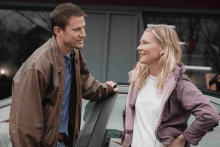
In a climactic moment of the crime-comedy Roofman, Jeffrey Manchester (Channing Tatum) enters a Presbyterian church. It’s a moment of respite, both for him and the audience. Until then, the Army veteran had been a man on the run: After robbing more than 40 McDonald’s to support his family, police unceremoniously arrested Jeffrey at his daughter’s birthday party. Though sentenced to 45 years in prison, he escapes and camps out in a hollow wall behind a bicycle display in a Toys R Us (Here is where I’ll mention that the film is based on a true story).
Pretty quickly, Jeffrey’s refuge becomes isolating. What good is a store full of toys if you have nobody to play with? While it would be risky to enter a public space, the desperation for connection drives Jeffrey to the pews.

Directed by Oscar-winner Edward Berger (All Quiet on the Western Front), Conclave begins when the pope dies unexpectedly. To elect the next pontiff, the College of Cardinals convenes in the Vatican, entering total seclusion from the outside world until a majority vote can be reached. But if God is working through the cardinals, so too is something darker: ugly hunger for power and bitter ideological divide.

The Lord of the Rings: The Rings of Power returned for its second season, bringing viewers back to a sprawling story inspired by the works of J.R.R. Tolkien.
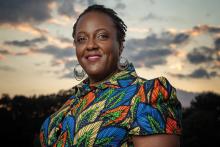
WHEN I WAS 8 years old, I fried an egg on the street. Well, I tried to fry an egg on the street. It had been a particularly brutal summer in Florida. On the days when the playground slides were too hot to go down, my mom would say, “It’s hot enough to fry an egg on the sidewalk!” I kept my eyes glued to that splattered yolk for two hours until a car tire brought the grand breakfast experiment to an end. Frying eggs on sidewalks was how I learned to conceptualize extreme heat.
When it comes to describing climate change urgency in Black communities, Heather McTeer Toney taps into something simple: streetlights. In Before the Streetlights Come On: Black America’s Urgent Call for Climate Solutions, she writes that when she was growing up, kids could play all day outdoors, but they had to be home “before the streetlights came on.” As twilight settled in and streetlights started to flicker, kids would call out, “Hurry up, we ain’t got all day!”
“Right now, that same call to action is carried in the waves of massive hurricanes, on the winds of devastating firestorms, and in the uncharacteristic heat of winter,” McTeer Toney writes. Using a familiar metaphor, she issues a call to action of her own.
Climate change and environmental justice is not foreign to McTeer Toney or the communities she writes about. At age 27, she was the first female and youngest person to serve as mayor of Greenville, Miss., where she was born and raised. As mayor, she brought the city out of debt and established sustainable infrastructure repair. For three years, she led the Environmental Protection Agency for the southeastern United States. While at the global nonprofit Environmental Defense Fund, she addressed environmental policy and community organizing within and beyond the U.S. This spring, McTeer Toney became executive director of Beyond Petrochemicals, a campaign to stop the rapid expansion of petrochemical and plastic pollution, particularly in the Ohio River valley and along the Gulf Coast.
McTeer Toney and her family attend Oxford University United Methodist Church in Oxford, Miss. I spoke with her by phone about her work, her book, and the hope her faith demands. — Christina Colón
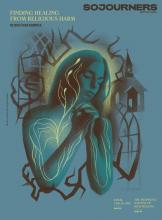
Healing from religious harm: Why compassionate community is part of the journey.

MATTHEW DESMOND, a Princeton sociologist and author, has grown tired of calls to reduce poverty — because he knows we can abolish it. In his new book, Poverty, by America, Desmond explores not the lives and struggles of people who are poor — but poverty, and the conditions that cause it. And Desmond contends that the lives the rest of us live are often connected to the conditions that cause poverty.
“To understand the causes of poverty, we must look beyond the poor. Those of us living lives of privilege and plenty must examine ourselves,” Desmond writes. “Are we — we the secure, the insured, the housed, the college educated, the protected, the lucky — connected to all this needless suffering?”
Desmond is the son of a pastor, and his work is rich with spiritual metaphor and flare while grounded in the material realities of poverty and the conditions that cause it. He dedicates a chapter of his book to refuting the idea that “neoliberal” cuts in welfare spending are to blame for poverty. “There is no evidence that the United States has become stingier over time. The opposite is true,” he writes. Instead, the problem is “a fair amount of government aid earmarked for the poor never reaches them.” Sojo.net associate news editor Mitchell Atencio spoke with Desmond about his new book, community building, and capitalism. —The Editors
Sojourners: Theologian Gustavo Gutiérrez defines poverty as “premature and unjust death,” saying that “the poor person is someone who is treated as a non-person, someone who is considered insignificant from an economic, political, and cultural point of view.” Is that a good way to describe poverty?
Matthew Desmond: I think that’s a factual way to describe what poverty is. Between 2001 and 2014, the richest women in America gained three years of life and the poorest women gained 15 days. So, poverty is death. There was a study that came out very recently that showed that one of the leading causes of death in the United States is poverty. I think that when we deny people access to basic needs, and we deny them basic economic security in this rich land, we do deny them life and happiness itself.
The other part of the quote about insignificance is very interesting because it does seem that in our popular culture — our TV shows, our movies, our children’s books — there are often no portrayals of real poverty in those media, and so it’s kind of amazing how seamlessly the poor can be erased from everything we’re reading and watching and reading to our kids.

IN SEPTEMBER 1987, ordained Methodist minister and practicing physician G. Scott Morris opened Church Health, a faith-based health care center in Memphis, Tenn. The first clinic tended to 12 people. Over 35 years later, more than 80,000 different individuals have come through Church Health’s doors. When they started, Memphis was the poorest city in the country, but Morris and companions didn’t open Church Health center as an act of charity. Church Health’s mission has always been about demanding justice. His book Care: How People of Faith Can Respond to Our Broken Health System tells the story of clinics across the U.S. where people practice Jesus’ command to heal. — The Editors
I FIRST CAME to Memphis in 1986. Having completed my theological and medical education, I was determined to begin a health care ministry for uninsured people working in low-wage jobs. I had dreamed of this for years as I slogged my way through the training that would make it possible. When the time came, I chose Memphis because historically it is one of the poorest major cities in the U.S. Today we see patients in clinics for primary care, urgent care, dental work, and optometry services. Behavioral health, life coaching, and physical rehabilitation are integrated into our clinics, and we have a teaching kitchen offering classes on culinary medicine for patients and the community. The Church Health model is used in more than 90 clinics around the country. There are about 1,500 free and charitable clinics in the U.S., many of which have faith-based connections.
God calls the church to healing work. Jesus’ life was about healing the whole person, and Jesus is the church in the world. Tradition suggests that Helena, the mother of the emperor Constantine, was the first to open a hospital specifically to care for the poor. The ancient world never had a system to care for the sick who were poor until Christians offered hospitals. Even Julian the Apostate, a fourth-century Roman emperor who did not have much use for Christians, wrote, “Now we can see what it is that makes these Christians such powerful enemies of our gods, it is the brotherly love which they manifest toward strangers and toward the sick and poor, the thoughtful manner in which they care for the dead, and the purity of their own lives.” We are still Jesus’ disciples, the body of Christ running after God’s priorities in the world together. What does it look like to have a healing ministry in today’s world?
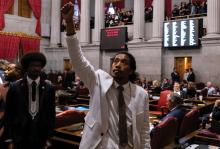
Justin Jones is a Tennessee state legislator representing Nashville. He spoke with Sojourners’ Mitchell Atencio.
What they were trying to do wasn’t just expel us, but the movements we are standing in solidarity with. It’s not ironic that it happened on the day before Good Friday. They tried to crucify democracy and I [was reinstated] the Monday after Easter as a testament to the resurrection of a movement for multiracial democracy here in the South. The resurrection of a Third Reconstruction [is] being led by students and young people — that’s a very powerful vision. If it’s possible here in the South, if it’s possible in Tennessee, that should give us some hope in the nation.

IN 2011, I took a course at my Christian college about the personality type system known as the Enneagram.
The Enneagram is a system built around nine personality types, with each type providing a unique perspective on how we navigate our relationships, emotions, and the world around us. The Enneagram draws on both spirituality and psychology, which distinguishes it from many other personality indicators.
A primary question that emerged for me from that college class: Does the inner work that the Enneagram encourages manifest itself in the outer world through justice work, or is the Enneagram primarily a tool meant to encourage people to focus on individual healing, career, and spirituality?
Throughout history, questions about how and why each human has a unique set of behaviors, motivations, emotions, and cognitions have preoccupied philosophers, psychologists, sociologists, religious thinkers, and Buzzfeed quiz creators alike. Indeed, in the 21st century, “know thyself” is less of a thought-provoking ancient Greek aphorism and more of a cultural imperative lauded by the self-help industrial complex and career coaches. We are assured that by unlocking our “true selves,” we will ultimately be unlocking our true potential, which will drastically improve our fortunes.
But the Enneagram was never meant to simply measure our potential or provide a definitive answer to the question of human personality. This is contrary to some of the most popular personality indicators such as Myers-Briggs or CliftonStrengths (formerly StrengthsFinder), which became popular because they promised to help employers tap into human potential and productivity. The Enneagram originated as a tool for contemplation but has come to emphasize how self-growth and inner work prepare us for the outer work of building community.
daniels.enneagram.inline1.jpg

In their book The Enneagram: A Christian Perspective, Catholic priest Richard Rohr and Lutheran minister Andreas Ebert point to a 4th-century Christian Desert Father, Evagrius Ponticus, as the first to use, loosely, the nine-pointed symbol to highlight vices that he believed interrupted one’s inner peace and relationship with God. But it wasn’t until the 1970s that Chilean psychiatrist Claudio Naranjo, inspired by a theory originated by Bolivian philosopher Oscar Ichazo, used modern psychology to develop a theory of nine distinct personalities — or “enneatypes” — that highlighted the vices, virtues, and core motivations of each type.
The Enneagram is sometimes treated as just another personality test that can help us purchase the things that “match” our personalities, find romance, or unlock our “true potential” so we can make more money — part of our culture’s obsessive focus on self-improvement. But at its best, the Enneagram not only emphasizes making peace with yourself and a higher power, it also offers tools for learning how to be in community and build a more just society.
To help me sort through my questions, I interviewed three Enneagram experts: Chichi Agorom, an associate faculty member with The Narrative Enneagram and author of The Enneagram for Black Liberation; Jessica Denise Dickson, a life empowerment coach and Enneagram guide who uses the Enneagram in anti-racist workshops; and Abi Robins, a queer, trans Enneagram teacher, coach, and author of The Conscious Enneagram. Their responses have been edited for length and clarity. — Josiah R. Daniels

CHRISTIAN MYSTICS HAVE a definite dramatic streak. Their transformative encounters with God are full of divine revelations (Julian of Norwich), ecstatic visions (Teresa of Ávila), stigmata (Francis of Assisi), erotic imagery (John of the Cross), and all manner of artistic compositions (here’s to you, Hildegard of Bingen).
But then there’s Brother Lawrence who — if he is known at all — is known for experiencing God’s presence as he washed dishes, cooked eggs, or did other monotonous chores that came with life in a 17th-century French monastery.
Born Nicolas Herman, he emerged from one of Europe’s deadliest religious wars a disabled veteran. Haunted by his past actions and convinced he was eternally condemned, he failed as a hermit (too much time alone with his thoughts), then as a footman (“a clumsy oaf who broke everything,” he recalled), before eventually joining the lay brothers of the Order of the Discalced Carmelites in Paris in 1640. Yet Brother Lawrence’s anxiety persisted. When he tried to pray, he spent the whole time “rejecting thoughts and then tumbling back into these same thoughts.” Eventually, he gave up all his spiritual exercises and focused on becoming aware of God’s presence as he did his assigned work in the monastery’s kitchen. What he experienced wasn’t a celestial vision, but what he had sought all along: God’s peace.
“We go to such great lengths, trying to remain in the presence of God by so many methods,” he told a friend who posthumously published Lawrence’s modest writings and letters. “Isn’t it much shorter and more direct to do everything for the love of God?”
Carmen Acevedo Butcher, an award-winning translator of mystical and classic Christian texts, was drawn to Brother Lawrence’s gentle practice. Acevedo Butcher herself grew up saddled with severe “self-loathing” and anxiety from a childhood shaped by trauma, hellfire preaching, and the strain of being “a brown girl in a white society.” But in Lawrence’s writing she finds someone who experienced real Love amid real pain.
In Practice of the Presence, Acevedo Butcher’s new English translation of Brother Lawrence, she emphasizes his embodied joy and his “original welcoming spirit,” which she sees in his frequent use of tout le monde — “for everybody.” Drawing on Lawrence’s deeply trinitarian theology, Acevedo Butcher uses they/them pronouns for God, a move she hopes will communicate Lawrence’s kind, inclusive understanding of Love to a wide audience. Acevedo Butcher spoke with Sojourners’ Betsy Shirley about translation, mysticism, and how Brother Lawrence’s practice connects to the work of social justice today.
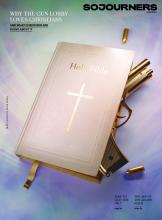
A fringe Christian ideology helped stoke an out-of-control gun culture. People of faith are working to take back the conversation.
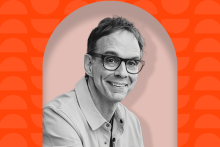
IN THE NOVEMBER 2022 issue of Sojourners, author and researcher David E. Kresta suggests that community economic development is one significant way that churches can bring hope and healing to their neighborhoods. Editorial associate Liz Bierly spoke with Kresta about how he connects his faith and his vocation, his book Jesus on Main Street and his Ph.D. research on the connection between churches and gentrification, and some steps faith communities can take to truly love their neighbors. You can read his article, “Your Church's Soup Kitchen Doesn't Create Social Change,” here.
This interview has been edited for length and clarity.
Liz Bierly, Sojourners: You went from a degree in computer engineering to having experience in marketing and management to a Ph.D. in Urban Studies that you leveraged to explore the role of churches in neighborhood change. Can you tell me more about that career trajectory?
David E. Kresta: I started out, as you noted, in the high-tech field as a software developer; I had this parallel journey, I guess. I had my vocation, and then I had my Christianity — and when I was raised, those things were separate. I grew up in this space where I was essentially living my “American dream life” — following and pursuing high tech, making money, having a job, and having a family — and then [having] my spiritual journey, and they weren’t connected. Over time, I think God sought me out and said, “Hey, these are things that need to be connected.”
And through a long process, I became aware of things that I had been blissfully ignorant of. I grew up in Detroit, which was hyper-segregated; I was very much isolated from poverty, and I didn’t even know anything about gentrification as I was growing. I think that captures a lot of what people live today: Things that are out of sight, they really have no connection to, and they don’t even know about them other than what they maybe hear on the news. To make a long story short, I started doing some volunteer work with churches to serve their communities and really became more aware of the things that are going on in the world around us, and the brokenness at the systems level.
God really challenged me through this process of discernment to dive in and, as best as we can, try to understand what is going on in the world around us. That’s why I decided to pursue that Ph.D.: Because I felt like the church really had something to say in this space, and we need to be better equipped to speak into and address the issues that are going on around us.
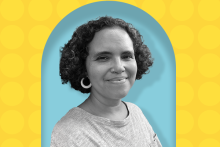
IN THE NOVEMBER 2022 issue of Sojourners, culture columnist Josina Guess explores the legacy of Denmark Vesey, Mother Emanuel AME Church, and the stories that resist removal. Guess spoke with editorial associate Liz Bierly about the connection between art and practice, the mentor that impacted her life and writing, and the full-circle moment of being back in Sojourners’ pages. You can read her November column, “Remembrance as Resistance,” here.
This interview has been edited for length and clarity.
Liz Bierly, Sojourners: You previously pursued a BA in fine and studio arts, and now you are working toward an MFA in narrative nonfiction. What led you to pursue these studies, and what does it look like for you to pursue the intersection of those topics?
Josina Guess: In college, I was just captivated by ceramics and by the process of having something that got my hands dirty and centered me every day in the swirl of college life. I think that’s why I majored in art — I could have studio time — but I wasn’t necessarily pursuing a career in the arts. I had been recognizing that words felt like a medium that I could carry with me anywhere I went, and I didn’t need to have a studio or a kiln.
I ended up not really pursuing ceramics, but I think writing was sort of a continuation of that sort of art as practice. When I’m trying to think about what my days are like [now] — like today I moved some goats, picked some cucumbers, and made some kimchi — I think it’s this combination of these real-life practices of gardening and farming and parenting, and then just engaging in and paying attention to what’s going on in the world and writing about it. [I’m] trying to find a balance in my own life of joy and centering, and then also seeing how to respond to the really broken and wounded parts of myself and of the world, and hope that healing comes in all of those practices.
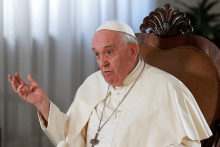
Pope Francis said he wants to give women more top-level positions in the Holy See and disclosed that for the first time he would name women to a previously all-male Vatican committee that helps him select the world’s bishops.
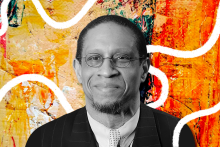
With scholarly precision and an ability to engage beyond the tired critiques of right-wing Christianity, Hendricks imagines a version of Christianity that is politically committed to social justice. Whether it is through his experience growing up in the Black church, his commitment to the revolutionary nature of Jesus’ teachings, or his insistence that leftist politics and Christianity can inform one another, Hendricks demonstrates the beauty of the Christian faith.

In his book PreachersNSneakers: Authenticity in an Age of For-Profit Faith and (Wannabe) Celebrities, published last month, Ben Kirby does more than throw stones at ultra-wealthy pastors; he asks readers to self-audit and consider where they’re spending, lest they throw that stone and shatter their glass houses.
